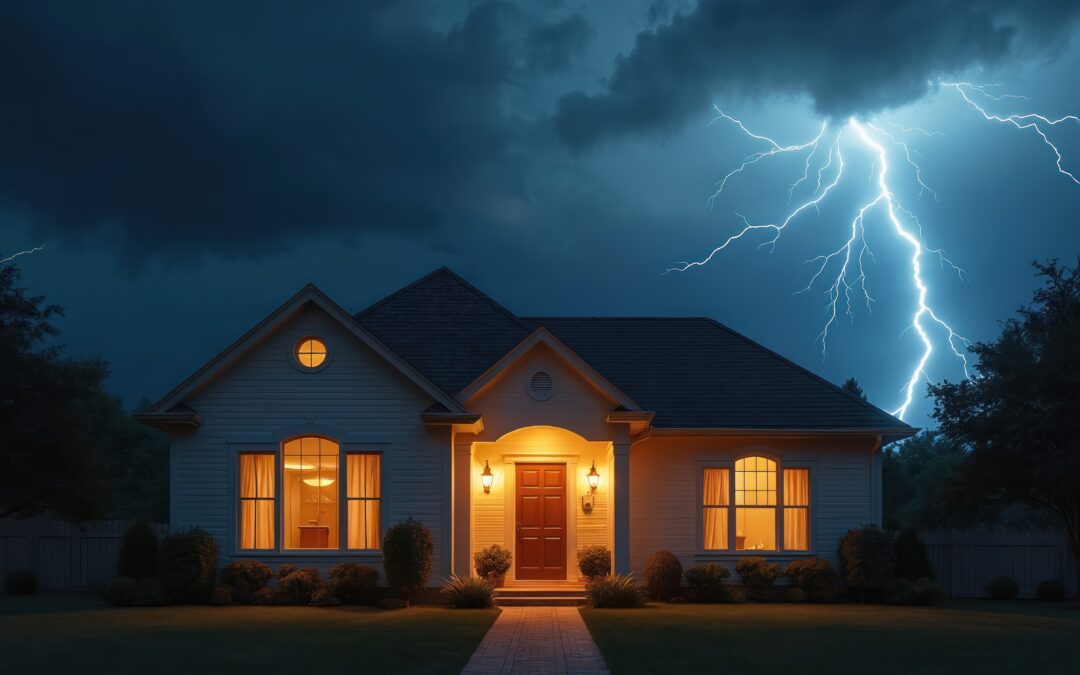Roof Flashing: The Overlooked Roofing Essential
Imagine investing thousands into a brand-new roof, only to discover a leak after the first storm. The shingles are intact, the gutters are clean, but water still seeps through. What went wrong?
In many cases, the culprit isn’t what you see on your roof, it’s what you don’t. That hidden hero is known as roof flashing, and without it, even the best roof is vulnerable to costly water damage. At Commonwealth Roofing Specialists, we’re dedicated to keeping homeowners and property owners in Roanoke, VA, informed. If you’re looking to protect your investment, understanding roof flashing and its role in roof leak prevention is crucial.
What Is Roof Flashing?
Roof flashing is a thin, waterproof material – usually made of metal – used to direct water away from vulnerable areas of your roof. These are places where water tends to collect or penetrate, such as:
- Roof valleys
- Chimney bases
- Skylights
- Vents & pipes
- Dormers
- Roof edges & eaves
Flashing acts as a barrier, sealing off joints and transitions to ensure that moisture doesn’t find its way into your attic, insulation, walls, or foundation. It’s one of the most essential components of a properly functioning roofing system.
Why Is Roof Flashing So Important?
Without properly installed roof flashing, your roof becomes vulnerable to leaks, even if the shingles are in perfect condition. Flashing works hand-in-hand with your shingles to form a watertight seal, especially in areas prone to pooling water or ice buildup.
Preventing Water Intrusion at Roof Penetrations
Areas like chimneys and vents need customized flashing to create a tight seal.
Channeling Water Away From Valleys & Joints
These are naturally weak points that require reinforcement.
Minimizing Structural Damage
Water infiltration can cause wood rot, mold growth, and insulation failure.
Extending Roof Lifespan
A roof with proper flashing lasts significantly longer.
Types of Flashing
There’s no one-size-fits-all when it comes to roof flashing. Different roof features require different types of flashing for full protection. Each plays a specific role and must be properly sized, sealed, and integrated with the roof system.
1. Step Flashing
Used where the roof meets a vertical wall, such as along chimneys or dormers. Metal pieces are layered in a “step” pattern to direct water downward.
2. Counter Flashing
Typically installed over step flashing to provide an extra layer of protection, especially around chimneys.
3. Valley Flashing
Placed in the valleys where two roof planes meet. It helps guide rainwater down into the gutters.
4. Drip Edge Flashing
Installed along the roof’s edges to direct water away from the fascia and into the gutter system.
5. Vent Pipe Flashing (Boot Flashing)
Specially molded flashing designed to seal around plumbing vents.
6. Skylight Flashing
Custom-fitted flashing that surrounds skylights to keep rain from seeping in around the window frame.
7. Chimney Flashing
A combination of step, counter, and apron flashing installed around the base of a chimney.
Roof Flashing Installation
While the materials themselves are relatively simple, the installation of roof flashing requires precision and experience. Improper installation is one of the leading causes of roof leaks, even on brand-new roofs.
At Commonwealth Roofing Specialists, we understand that flashing is more than just a finishing touch, it’s your roof’s first line of defense. Our skilled team ensures every piece is installed with care, because your peace of mind is worth it.
Quality Installation Should Include:
- Accurate measurement and cutting to fit unique roof angles and penetrations
- Correct layering with shingles and underlayment for seamless water runoff
- Use of high-quality sealants and fasteners to ensure durability
- Integration with other roof systems, like gutters and ventilation
Signs Your Flashing Needs Attention
Because flashing is often hidden beneath shingles or tucked away in roof crevices, damage can go unnoticed until it’s too late. Be on the lookout for these warning signs:
- Water stains on ceilings or walls
- Mold or mildew in the attic
- Visible rust or corrosion on flashing
- Missing or dislodged flashing
- Shingle deterioration near roof features
If you spot any of these, it’s time to have your flashing inspected by a trusted professional.
Roof Flashing Is Not Optional
Whether you’re building a new home, replacing an old roof, or just performing routine maintenance, don’t overlook flashing. It’s one of the roof essentials that protects your home from the elements and maintains structural integrity. As the unsung hero of your roofing system, you may never notice it when it’s working properly, but when it fails, you’ll definitely feel the consequences.
Protect Your Roof the Right Way
If you’re concerned about roof leak prevention or suspect your roof flashing may be compromised, don’t wait until the damage sets in. Our roofing experts at Commonwealth Roofing Specialists are here to help.
With years of experience serving homeowners and businesses, we’re committed to providing top-quality workmanship and lasting protection for your property. Whether you need flashing repair, a full roof replacement, or a professional inspection, we’ve got you covered. Contact us today!

